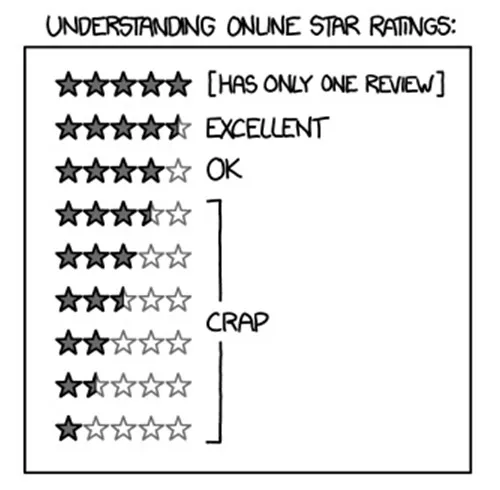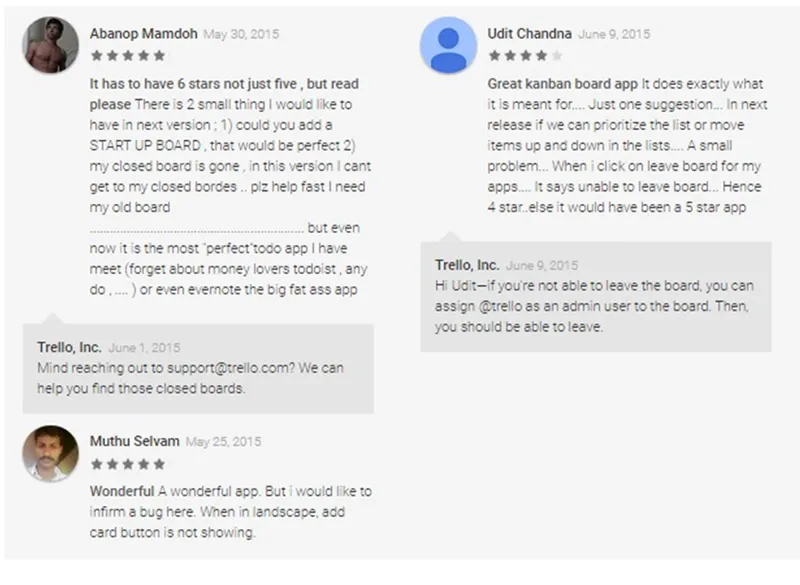9 timeless techniques that will improve your app ratings
Let’s face it: it is rare to not think of user ratings, or worse, to not strive hard just to get that coveted 5-star crown for your app. User rating on app stores can significantly influence your prospective users, and, therefore it is quite legitimate to factor in the various ways of dealing with it into your app marketing plan.

But the big question here is whether you are doing it right; are the steps you are taking to boost user rating judicious enough? Mastering the art of user rating isn’t an easy process and is constantly evolving, owing to the changing faces of app stores, and therefore there cannot be an “essentials” or “definitive” guide for it. That being said, a few tricks are timeless in nature and deserve to be discussed again.
If you want to improve user ratings, check out these 9 tips for outshining your competitors and making a memorable impression on your prospective app user.
- Take Negative Feedback With A Pinch Of Salt
Very recently I came across this image and was really amused by it (I bet you will be too).

Image Source> http://xkcd.com/1098/
Most users rate a product using the ladder method. However, the same isn’t true for app developers! A bad experience with your app, and you may also fall into the ‘crappy app’ category. But that doesn’t mean that you close doors on them. It is essential that app reviews are dealt out cautiously, and an attempt is taken to address the user’s query.
I have scouted through app stores reviews a million times. I realised that most app developers choose not to respond to negative reviews. This isn’t a great practice since it shows disinterest on the part of the app developer.
The Trello mobile app is a great example here. The below-mentioned snapshot displays the efforts taken by the app development team in addressing the concern of users. In a time of tremendous competition around your app, it makes more sense to respond than to just listen.

2) Address App Reviews On Time
Yes, it is not easy, but that should not deter you from addressing app reviews on time. Unattended or delayed response can also influence subsequent app users. With numerous users, the best way to respond to user reviews is by automating the complete process. This will not only simplify the process it will also help in bridging the time between a response and review.
These two tools can come in handy for everyone in the app developing community who has been struggling with addressing users on time.
- Launchkit- Launchkit is a wonderful product that provides app reviews straight to your inbox, and can be integrated with Slack. Read more about it here.
- AppBot- Another excellent tool that developers can fall back on is called AppBot. Appbot helps developers to visualise user sentiment, and gathers reviews from iOS, Google and Amazon stores in all countries. It can also be easily integrated with Slack, Trello, HipChat and other user flow applications, making it irresistible!
3) Be Modest While Asking For Reviews
Most app developers believe that app reviews are biased towards negative reviews. Attaining positive user reviews thus becomes paramount. However, developers usually make a big mistake of bombarding app users with pop-ups. Of course, this is an instant way of notifying your customer, but it shouldn't become a harrowing experience for them. A few tools listed below can help developers immensely:
- Appirater- Appirater is available for both iOS and Android and helps satisfied users to rate your app. It is highly customizable, and offers pop-ups for user reviews only after a pre-set number of app launches and days.
- iRATE - iRATE is available for iOS platforms can be easily integrated. Just like Appirater, it targets only regular users.
Apart from the above-mentioned tools developers should also consider:
- Placing call-to-action buttons (for rating) on the main screen, visible to the app user.
- Giving an opportunity to users to share ratings on social media; this will help developers reach a bigger target market without cost.
- Go easy on push notifications.
- Understand your user’s app usage pattern before planning anything else. This will help developers in creating an interruption free experience for them.
4) Make It Easier For App Users To Reach You
A negative or positive review is influenced by the user’s psychology. A happy user is more likely to rate you a five star whereas a dissatisfied customer may choose otherwise. What can be the reasons that a dissatisfied customer chose so? Was it lack of timely update (discussed earlier) or something else? In my opinion most commonly it happens when the app user isn’t able to contact the developers in the first place. Honestly, intelligent users will try to reach you (at least once) before rating your app negatively.
The idea is to make this easier for the app users. Here’s how:
- Add contact info at the end of app description. This could be a support email ID or links to social media channels where a user can contact the developers.
- Create an exclusive platform for app users. By this, I mean either a dedicated toll-free number or an exclusive website landing page. An FAQ section can also limit the number of complaints.
- Have a two-way chat option that allows your users to chat with your support team directly. Platforms like Konotor or HelpShift should help you get this feature live within a matter of minutes. The best part about this is that you can ask users to rate the app inside the chat.
5) Use Net Promoter Score To Boost App Rating
Developers shouldn’t flinch at any idea that could support superior ratings. Using NPS surveys is just one of these tactics. It can be easily integrated with in-app messaging and can help developers in gaining value data thereby improvising for future marketing campaigns.
The folks at Localytics have written an awesome post on how to use NPS to boost app ratings. Apart from that, they have also created a step by step guide on how to create a NPS survey. In their opinion “An NPS campaign is a great way to discover which users are more likely to give your app the high praise you desire.”
6) Ask Yourself: Is It Soon Enough?
The biggest lesson that developers can learn here is the fact that no one likes to be interrupted. Unfortunately app ratings tend to follow the same pattern.
It is necessary to get feedback. H,owever developers shouldn’t try this till the user has spent sufficient time with the app. With that I am suggesting the following tactics, that every developer can follow:
- Set a goal based on your user. For example ‘we will send app review prompts when the user has spent a week with the app’. Of course, the goal can be tweaked to suit your app.
- If developers align rating prompts immediately after a ‘wow’ moment, chances are that it will be better. A gaming app can send the prompt when the user has crossed a certain milestone. Similarly, shopping apps can send rating prompts after the user has purchased a discounted product.
- A lot of advice also touches upon asking simple questions instead of complicated ones.
7) Providing An Avenue For Sharing On Social Media
Social media platforms are the strongest tool in a developer’s arsenal when it comes to seeking app reviews. You’ll agree with the fact that most app users would be present on ‘vocal’ social media platforms (Facebook and Twitter). This aspect makes it easier for developers to seek app rating reviews directly from their followers.This will not only showcase your app to a broader audience, but a positive app review would also bring in word-of-mouth publicity for your app. You might want to check this awesome article - In-App Share Intent: The One Mobile Growth Hack You Aren’t Using
8) Run A Blogger Outreach Program
Within the tech world, a genuine blogger review can influence your users in a big way. The only hurdle here can be reaching out to these influencers. Finding a successful blogger begins with collecting relevant data about people who matter in your business.The second step is contacting these people and landing a review or a guest post that stirs users.
Writing an e-mail to an established blogger is an art, considering that they get such emails every day. This post by Mashable can come to your rescue while planning this strategy effectively.
One Size Doesn’t Fit All!
Even while rounding off this post, I’m aware that there are a million other things that can be said about the topic here. What are the other timeless techniques that you can think of? Do add them in the comments below.







